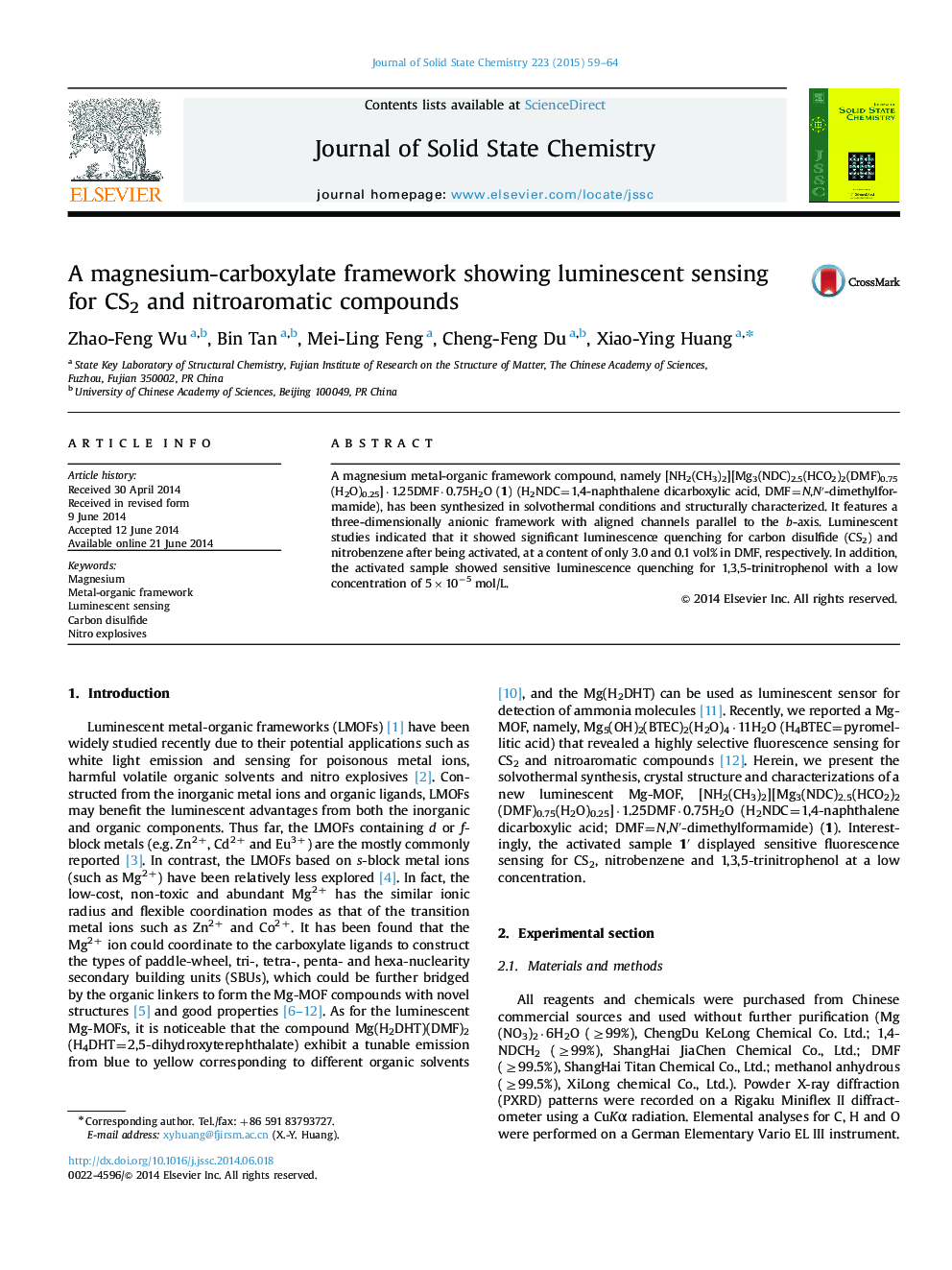| Article ID | Journal | Published Year | Pages | File Type |
|---|---|---|---|---|
| 1328985 | Journal of Solid State Chemistry | 2015 | 6 Pages |
•A microporous 3D metal-organic framework based on Mg.•The compound shows significant luminescence quenching for CS2 and nitrobenzene after activated.•The compound shows sensitive luminescence quenching for 1,3,5-trinitrophenol with a low concentration of 5×10−5 mol/L.
A magnesium metal-organic framework compound, namely [NH2(CH3)2][Mg3(NDC)2.5(HCO2)2(DMF)0.75(H2O)0.25]·1.25DMF·0.75H2O (1) (H2NDC=1,4-naphthalene dicarboxylic acid, DMF=N,N′-dimethylformamide), has been synthesized in solvothermal conditions and structurally characterized. It features a three-dimensionally anionic framework with aligned channels parallel to the b-axis. Luminescent studies indicated that it showed significant luminescence quenching for carbon disulfide (CS2) and nitrobenzene after being activated, at a content of only 3.0 and 0.1 vol% in DMF, respectively. In addition, the activated sample showed sensitive luminescence quenching for 1,3,5-trinitrophenol with a low concentration of 5×10−5 mol/L.
Graphical abstractPresented is a microporous 3D Mg-MOF, namely, [NH2(CH3)2][Mg3(NDC)2.5(HCO2)2(DMF)0.75(H2O)0.25]·1.25DMF·0.75H2O (1) (H2NDC=1,4-naphthalene dicarboxylic acid) showing significant luminescence quenching for carbon disulfide and nitrobenzene.Figure optionsDownload full-size imageDownload as PowerPoint slide
